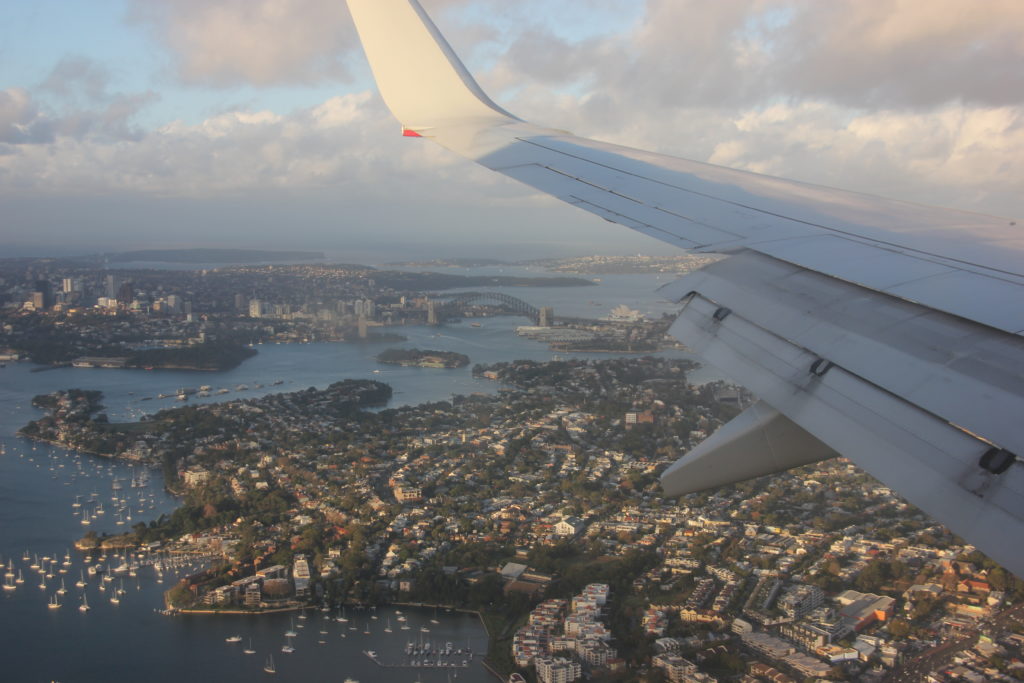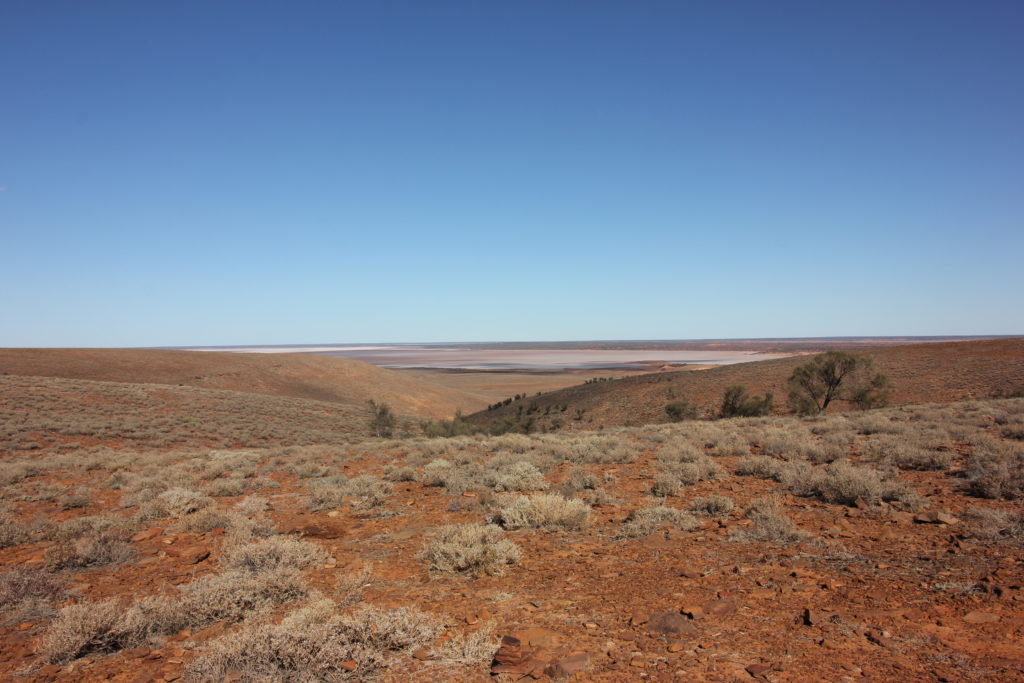02.05.2019: Not much regarding flying, but I ordered tickets for the Wings over Illawara airshow. That’s an annual airshow taking place at Illawara Regional Airport, which is located near Wollongong, around 100 km south of Sydney.
04.05.2019: It’s Airshow time…. Lot’s of people already at 9 in the morning, even though the program only starts at 10:30.
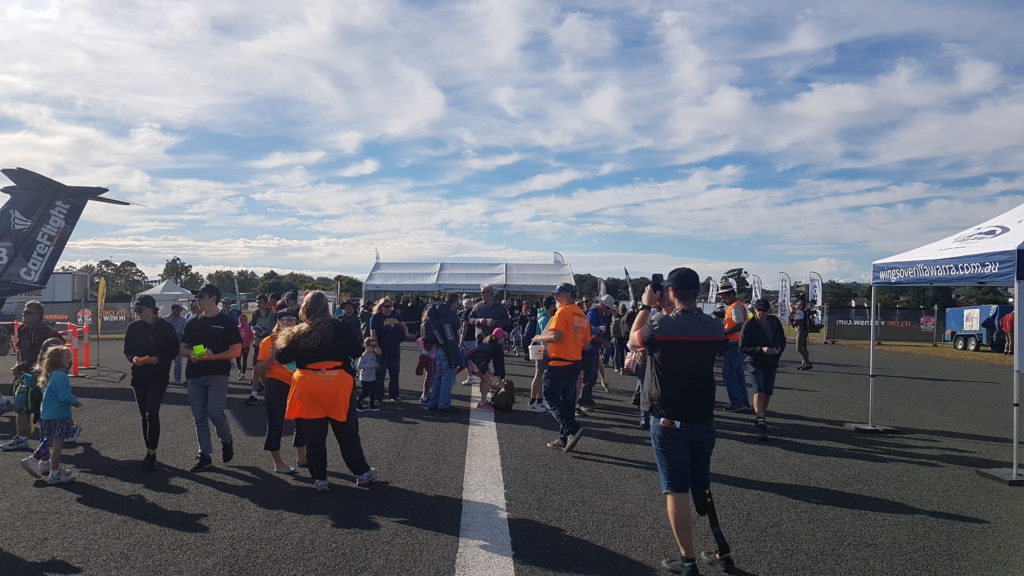
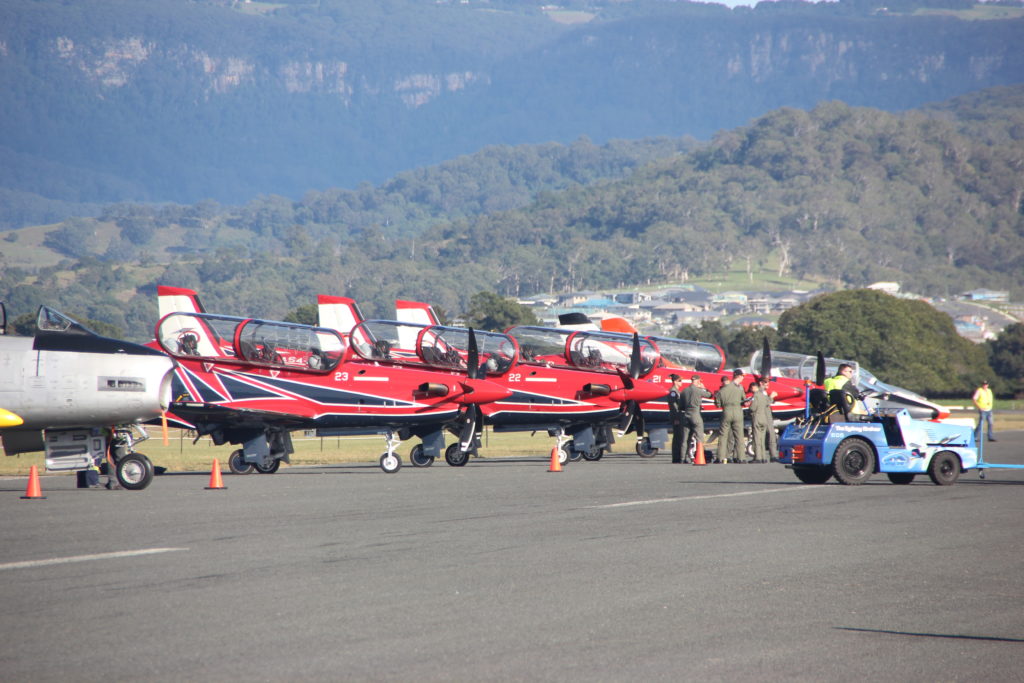
This year’s program’s military part has a focus on transport aircraft, as well as aircraft new to the inventory of the Royal Australian Air Force RAAF. Below a few pictures of aircraft shown in flight:
The transport lineup started with a C-47 (DC-3). This particular aircraft was delivered to the Royal Australian Air Force on the 2 May 1945, meaning it is 74 years old…

Next there was a DHC-4 Caribou, built by De Havilland of Canada in 1964, so 55 years old.
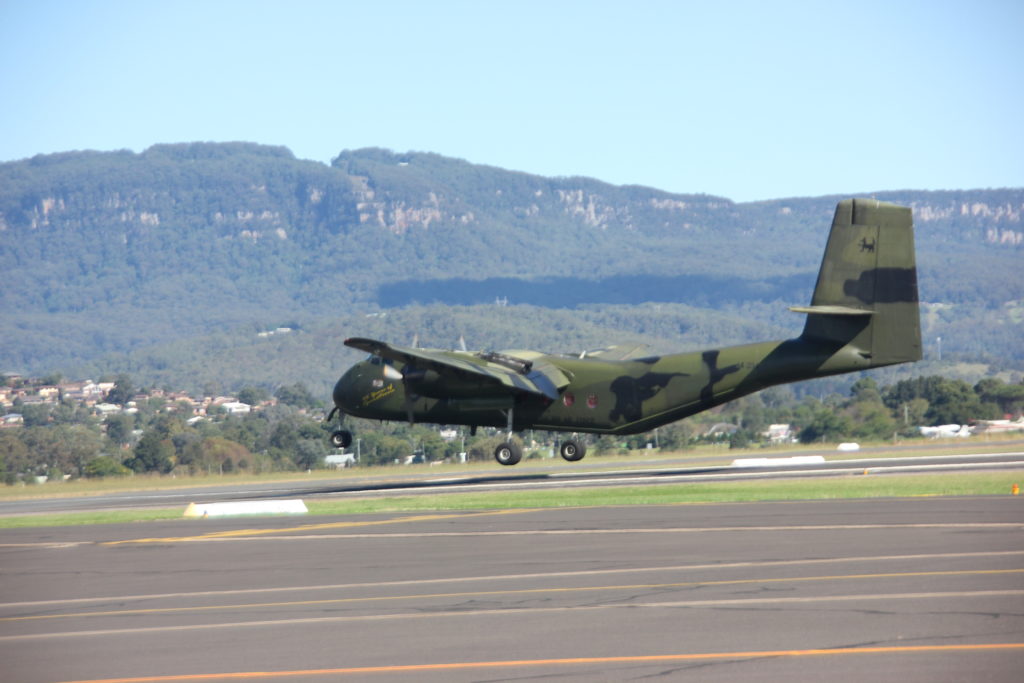
On the more modern side they showed an Alenia C-27J Spartan…


… and a Lockheed C-130J Hercules. Even though they are twin respective four engine types, they share a lot of components, such as engines, propellers and avionics, simplifying maintenance.
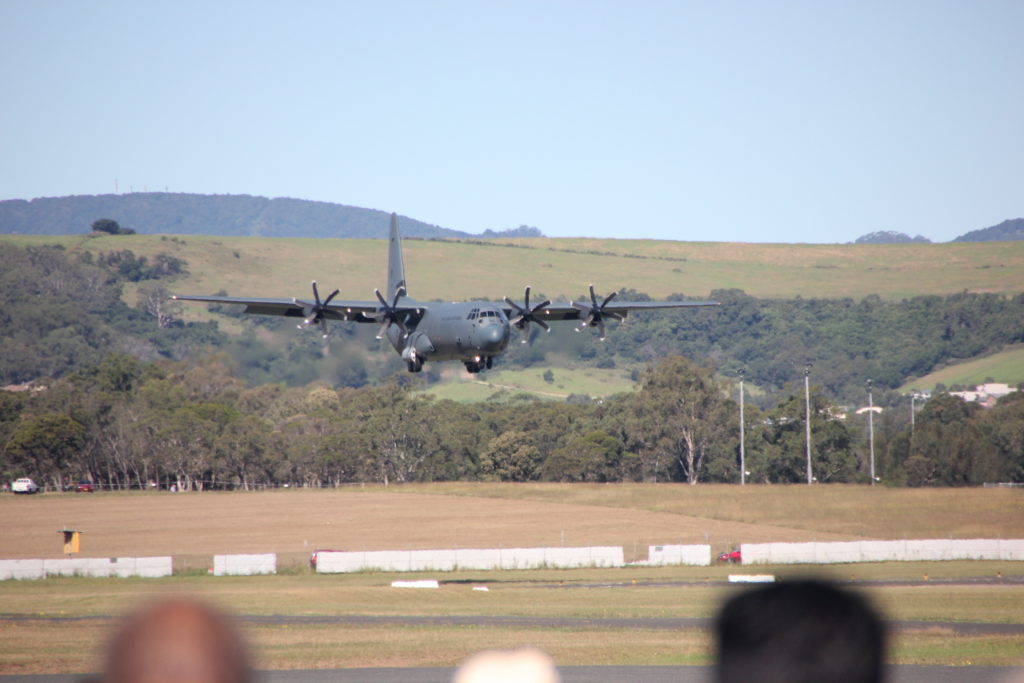
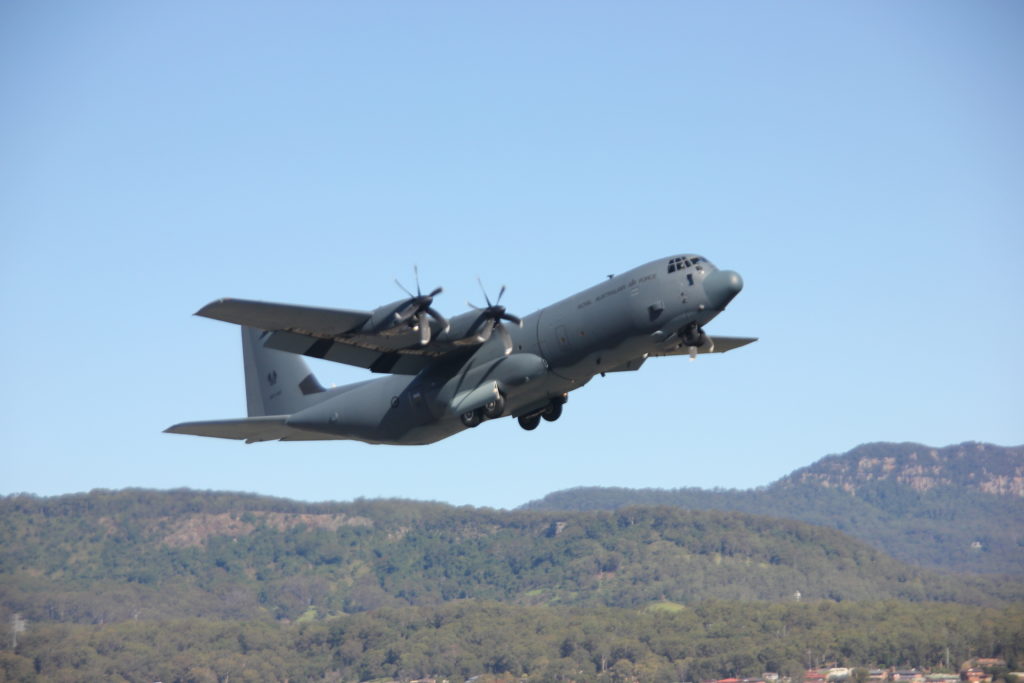
On the top end they demonstrated a Boeing C-17 Globemaster. I love to see those huge transport planes, and despite their size and weight they are pretty agile.


There were of course also a lot of other aircraft shown, both vintage aircraft, warbirds and aerobatics aircraft.

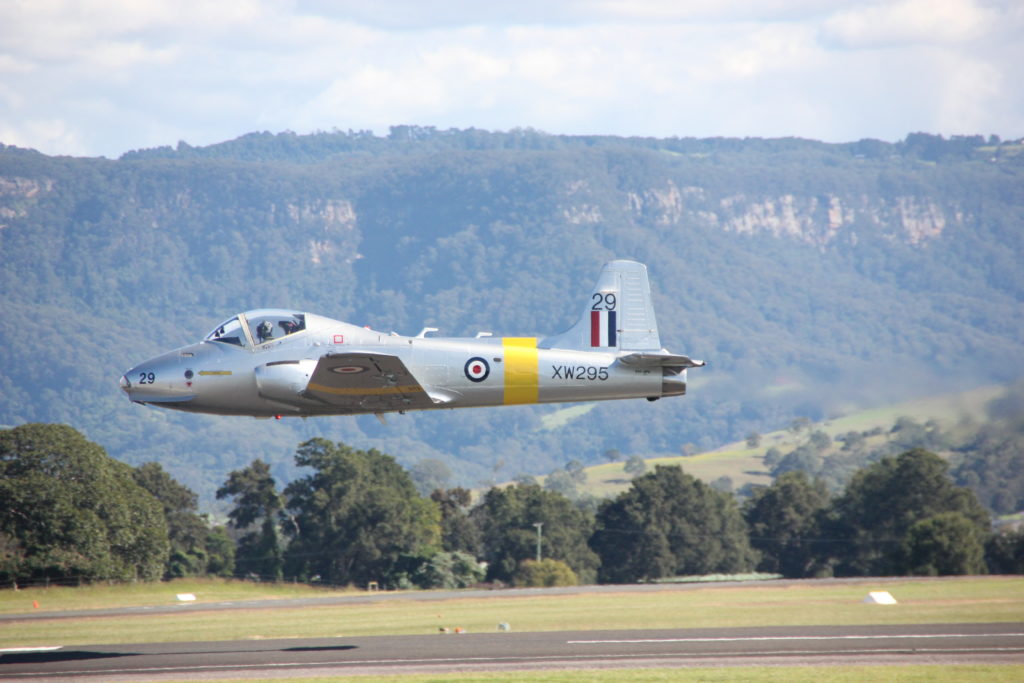
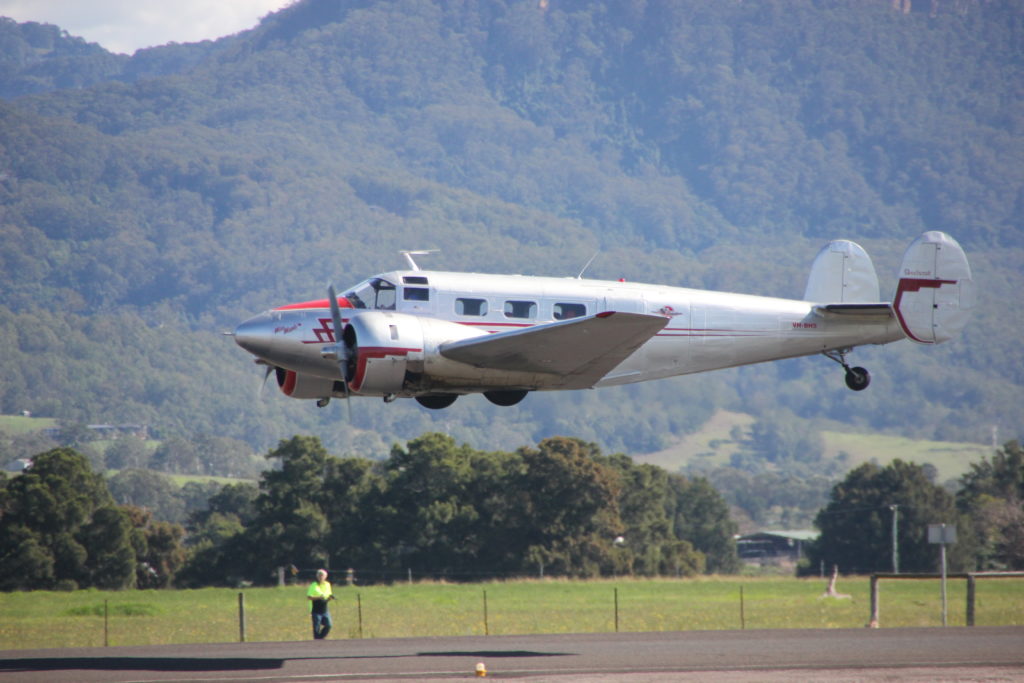
There is also the Historical Aircraft Restoration Society HARS located at the Illawara Regional Airport, which also operates a museum with a collection of large aircraft. They range from former military aircraft, especially maritime patrol aircraft to civilian airliners, up to an ex QANTAS Boeing 747-400. Some of their aircraft are even in flying condition, such as their Catalina, and P-3.
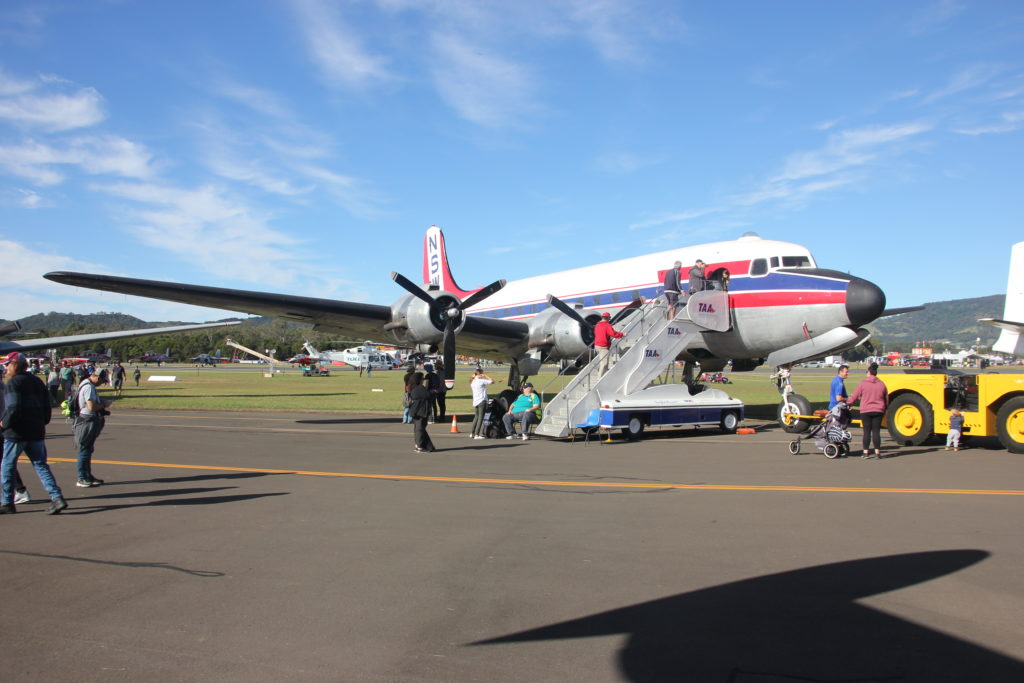
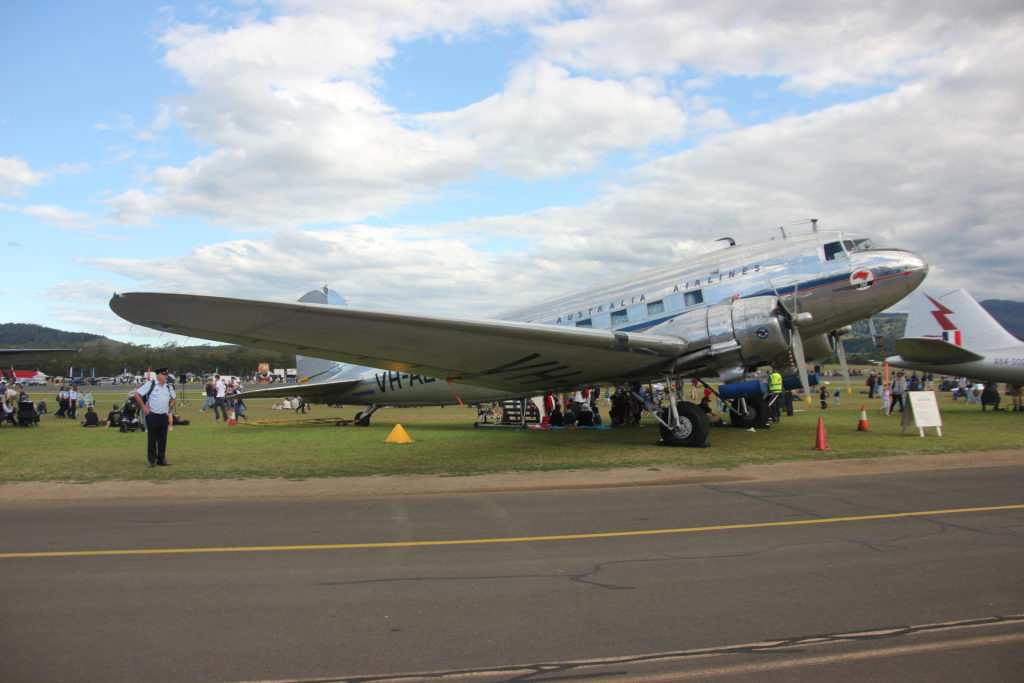
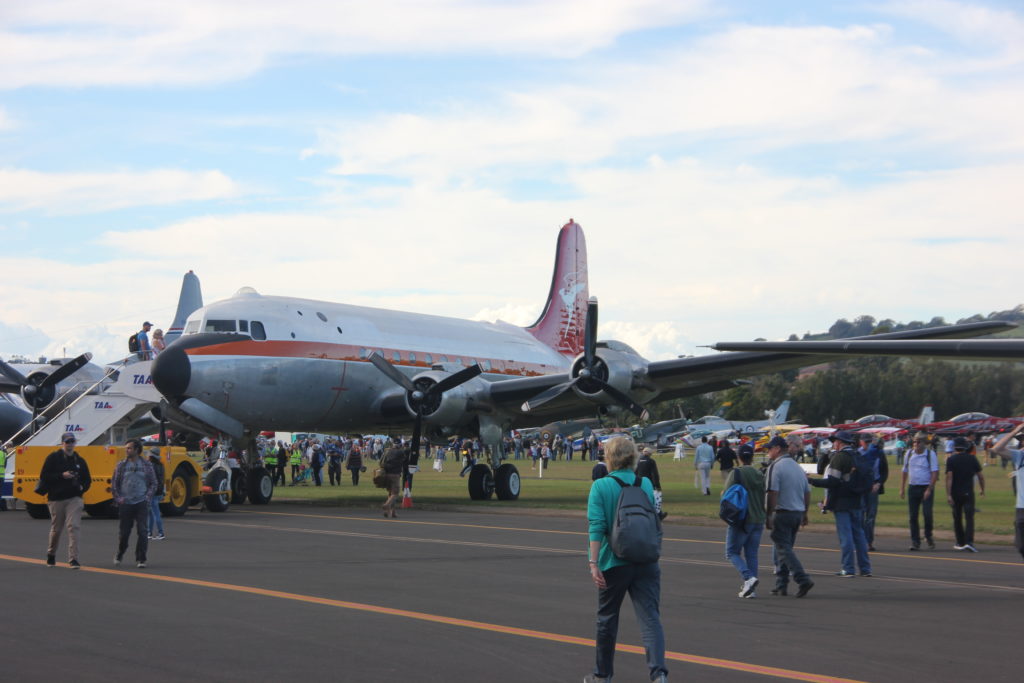
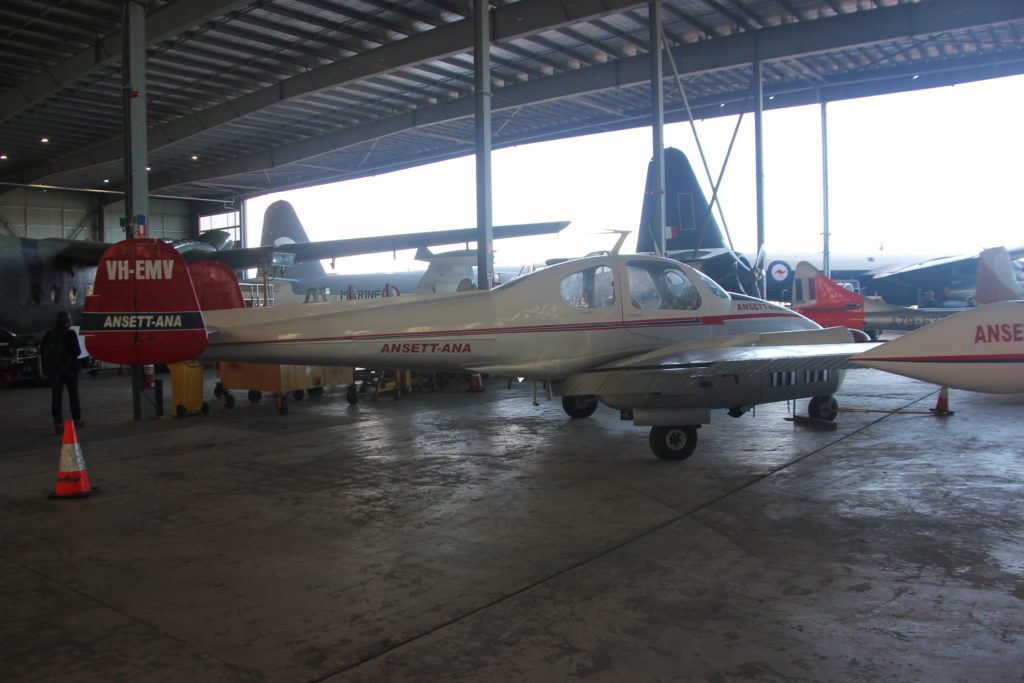
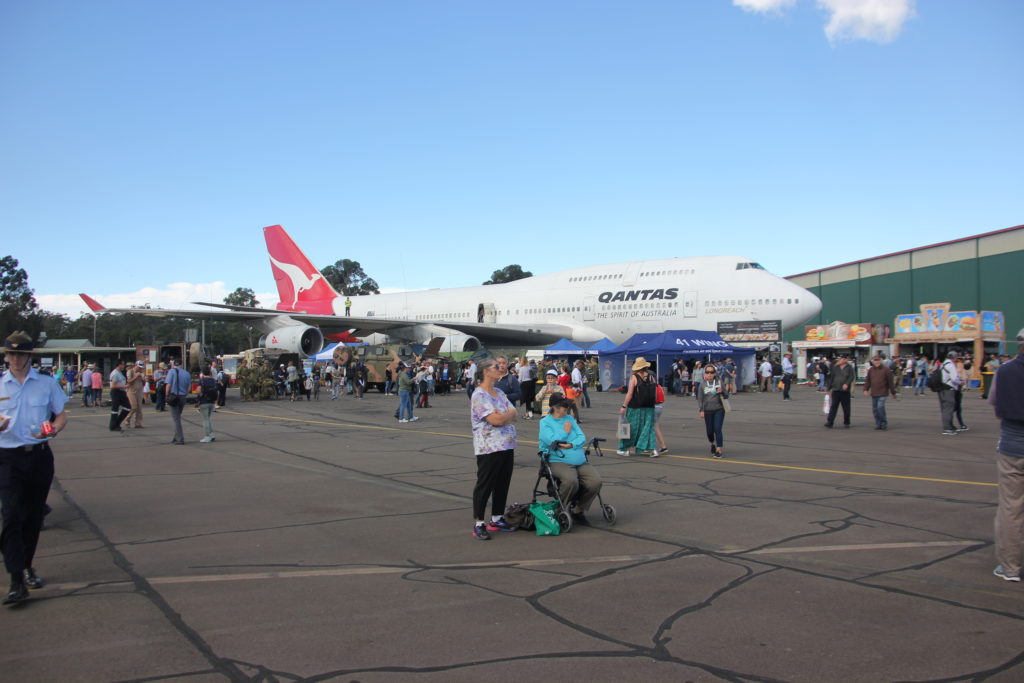
The “new to the inventory” part of the airshow started off with the Pilatus PC-21, which is replacing the PC-9/A, their current advanced trainer. The Royal Australian Air Force has ordered 49 PC-21s, some of which will be used by their aerobatics demo team, the Roulettes. So far only four have been delivered to the Roulettes, so their air display was a bit limited in regard to the formations they could show, but the PC-21s superior performance was clearly visible.


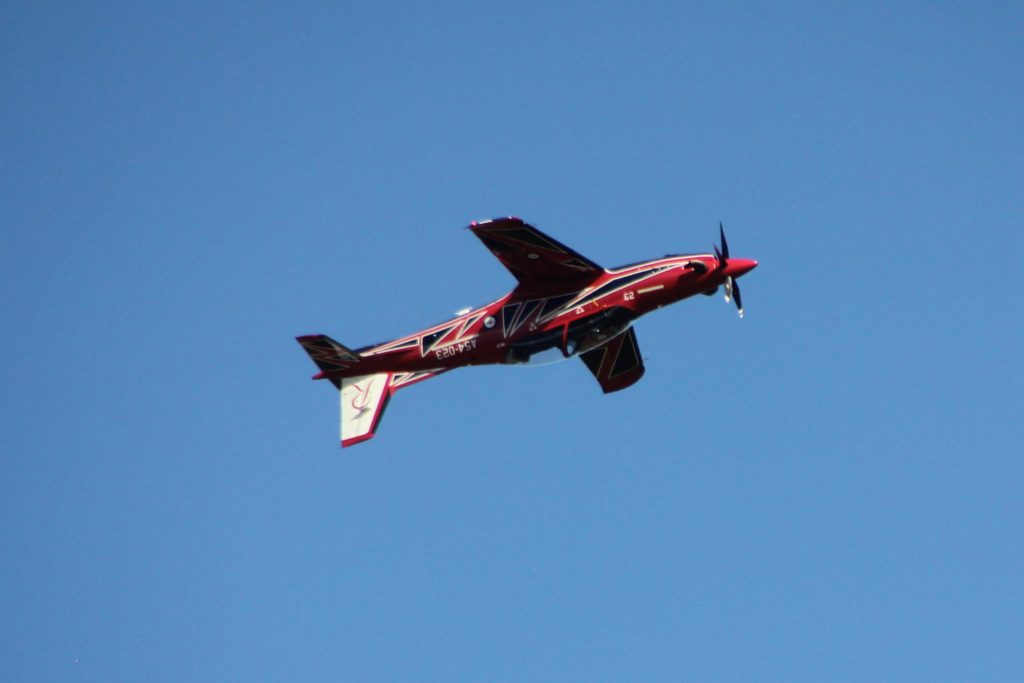
The Royal Australian Navy demonstrated its Sikorsky MH-60R Seahawk submarine hunter helicopter, which did quite an impressive flight demo.
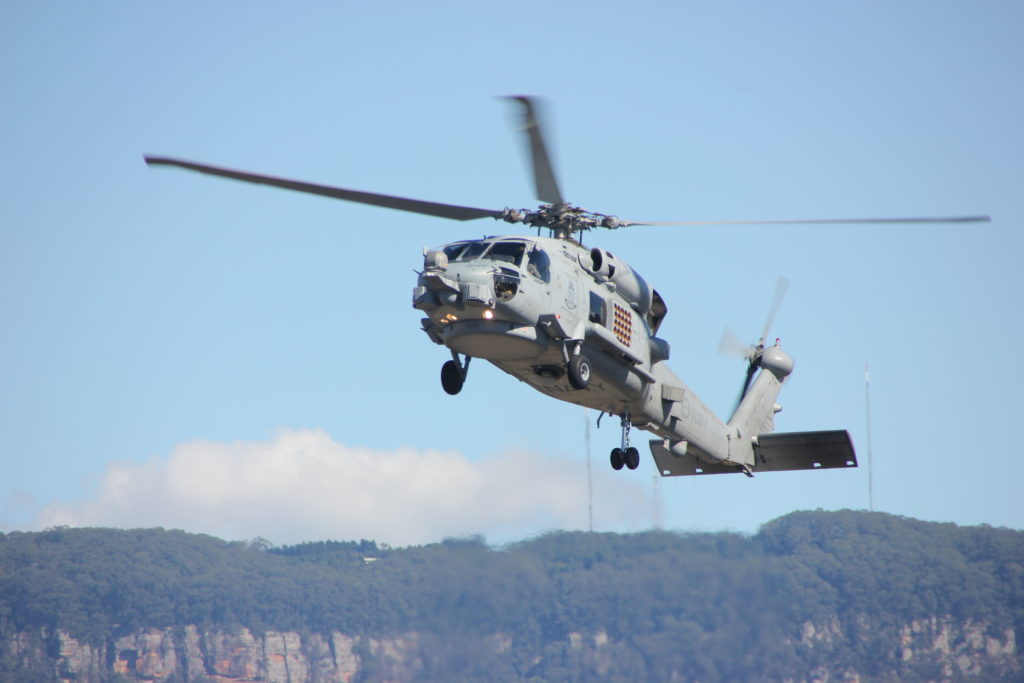
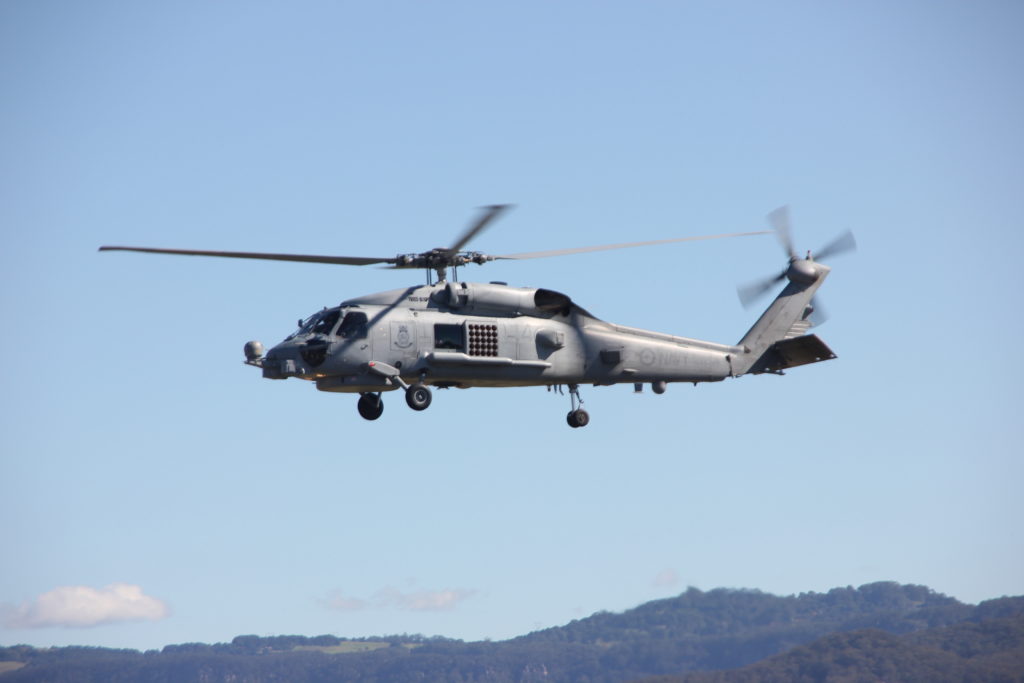
Last but not least they showed off the new Boeing P-8A Poseidon maritime patrol aircraft, which is replacing the Lockheed AP-3C Orion currently in service.
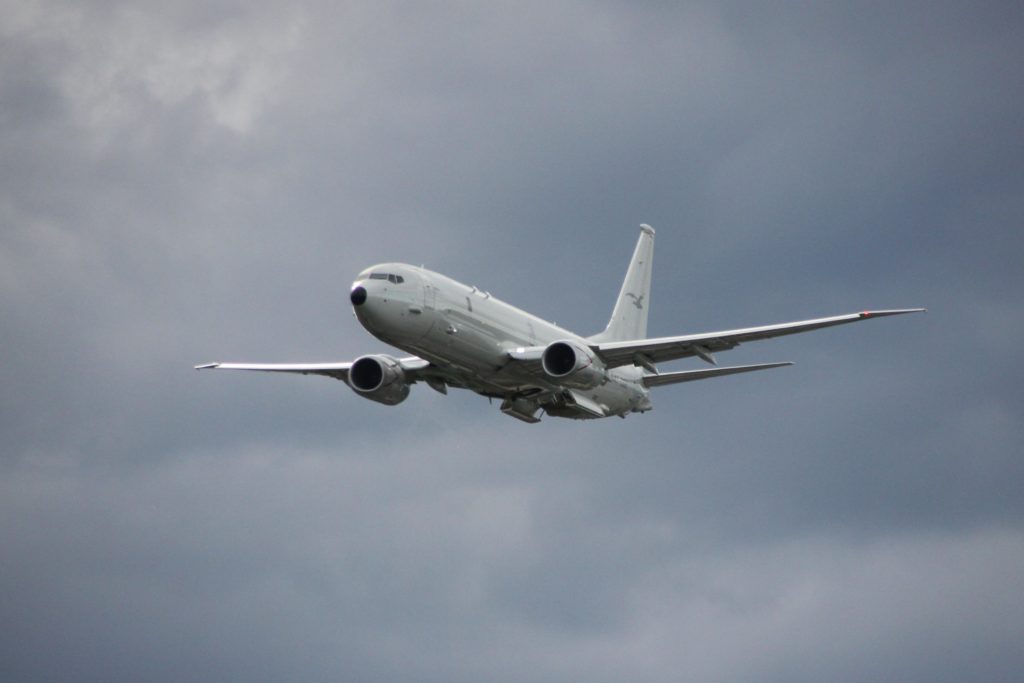
The Poseidon is essentially a Boeing 737-800ERX, fitted with the wing of a 737-900 with 767 style wingtips, underwing hardpoints and a bomb bay, and can carry various rockets, torpedoes, depth charges etc.
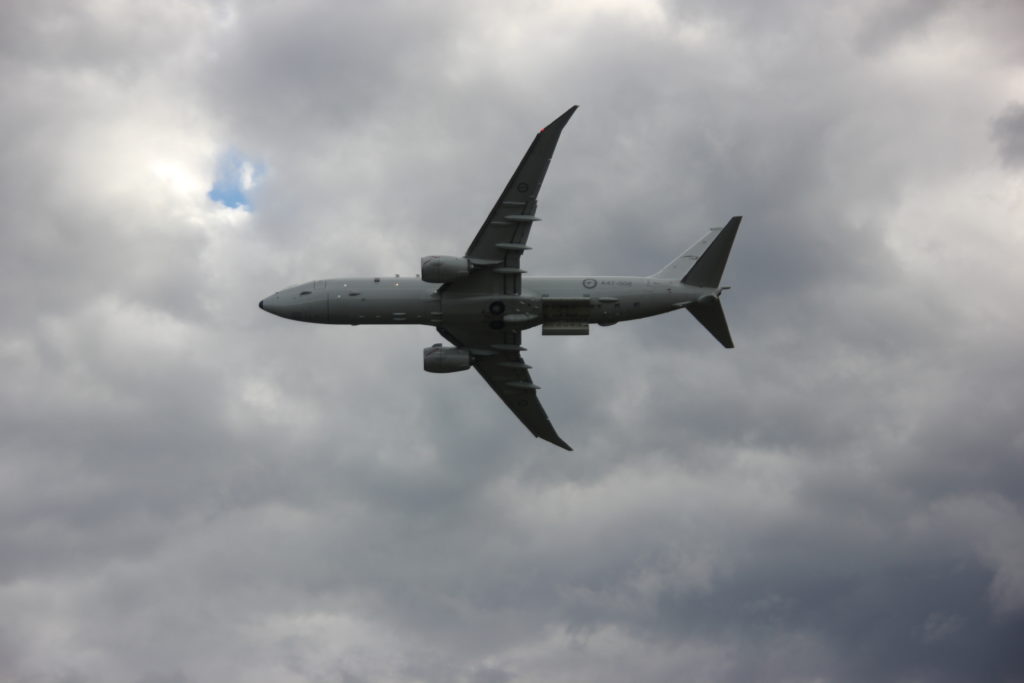
05.05.2019: We stopped today at a railway museum, where we discovered this cute little “bus”. It was used to provide rail service in more remote, rural corners of New South Wales.
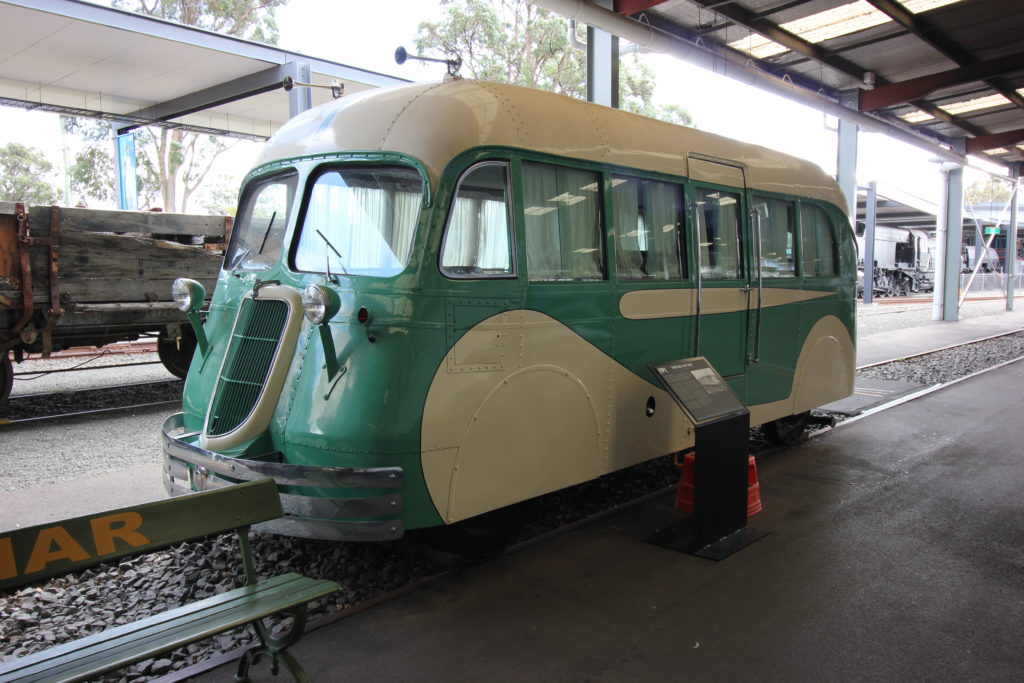
Maybe I should buy one of these to go to work, as we have rail access at our factory. I would have the advantage of having the flexibility and privacy of going to work by car, but avoid traffic jams.
18.05.2019: We managed to take two weeks off, as the customer has re-scheduled our project, creating a gap between two work streams. We decided to drive by car to Uluru, which I always wanted to do, but so far never managed. That’s a 3’000 km drive through the true Australia, the nearly unlimited stretches of rural outback. We will however be staying largely on paved roads, so no 4WD tracks. From Uluru we will continue to Alice Springs, and then fly back to Sydney.
20.05.2019: Today we stopped at the Parkes Radio Telescope, which was for long the largest of it’s kind in the world. It played a role in the Apollo 11 moon landing, as it served as relay station during those parts of the mission when the moon was only visible from the southern hemisphere.

From Parkes we continued to Narromine, which has a small, but very nice aviation museum. The airfield served as a major training centre for pilots in the second world war.
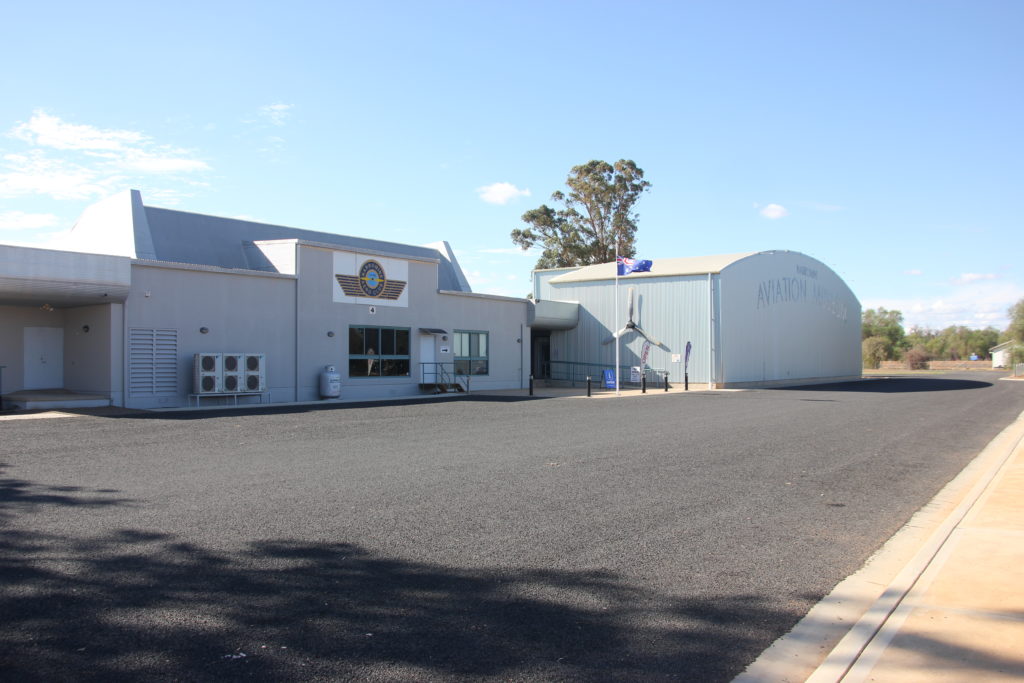
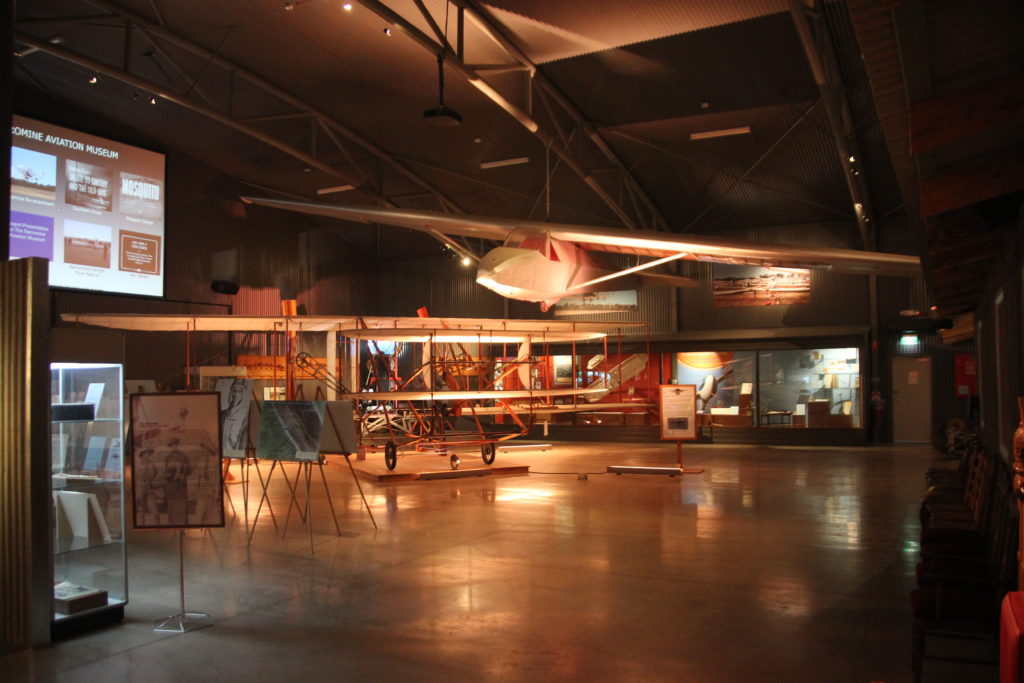
21.05.2019: We stopped at the Royal Flying Doctors Visitors Centre in Broken Hill today, that’s a mining town which lies roughly 1’000 km west of Sydney. It is also the last town in New South Wales, tomorrow we will enter the state of South Australia.
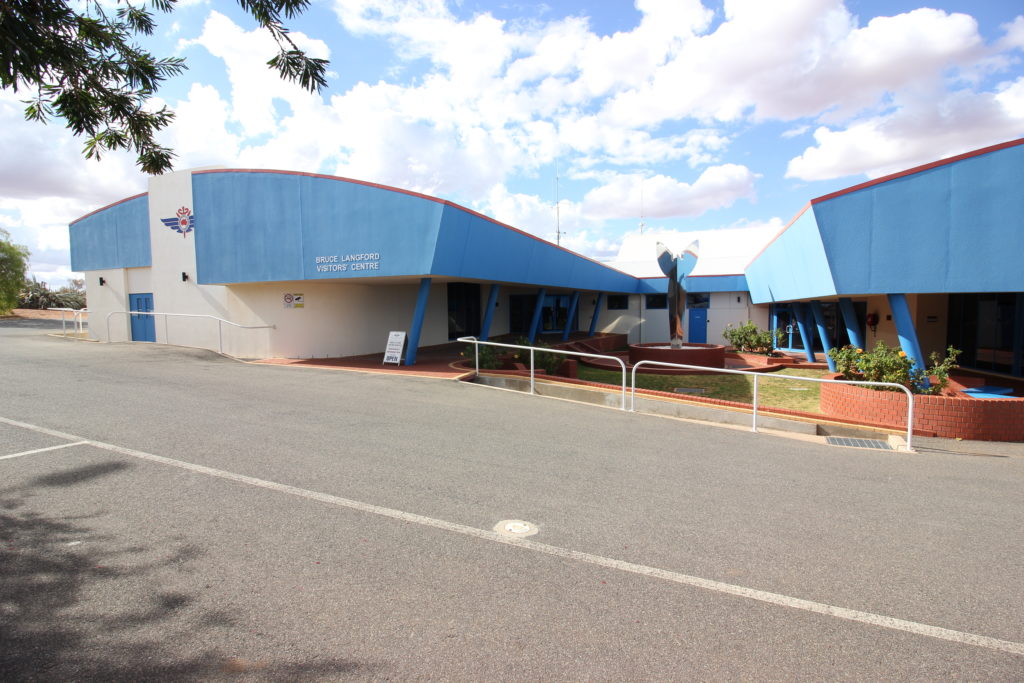
The Royal Flying Doctors Service provides medical services to the remote parts of Australia. They currently operate 71 aircraft, many of them from Pilatus Aicraft (PC-12 and PC-24). They operate from 21 bases, covering an area of 7.15 Million km2.
The base in Alice Springs alone covers 1.25 km2, where 16’000 people live. That’s 30 times the size, but only 1/500th of the population of Switzerland.
Below the main control room, on the screen on the wall one can see each aircraft which is currently in the air in their section.
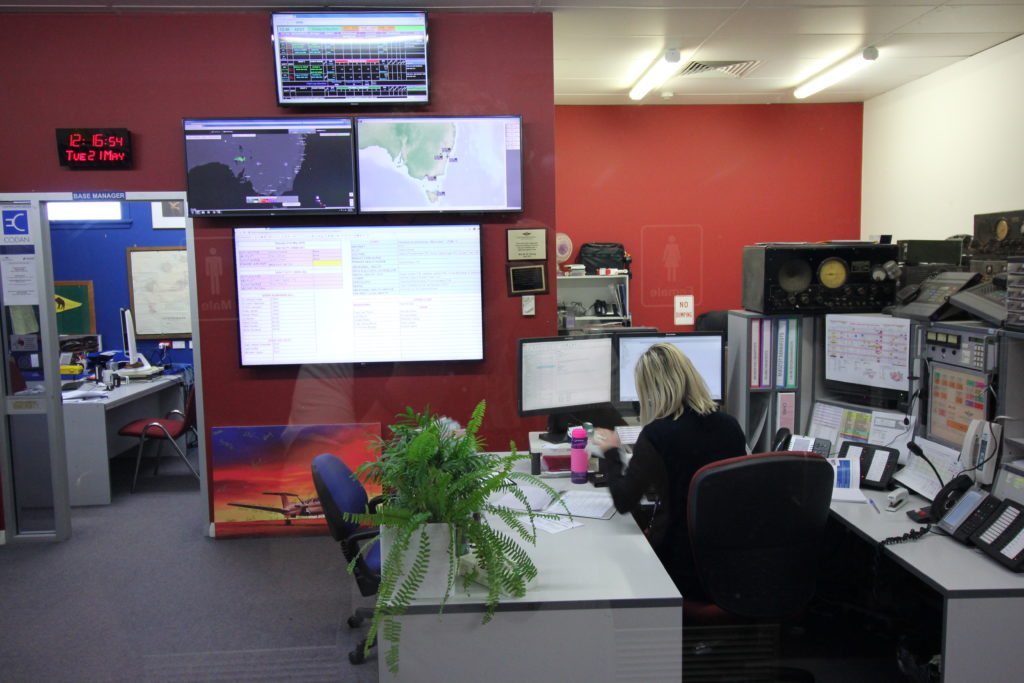
They have just opened a new, air conditioned hangar, until a few months ago they were working under up to 50 degrees in the hangar below. They are now converting it to a section of their little museum, and are rebuilding some early aircraft for display.
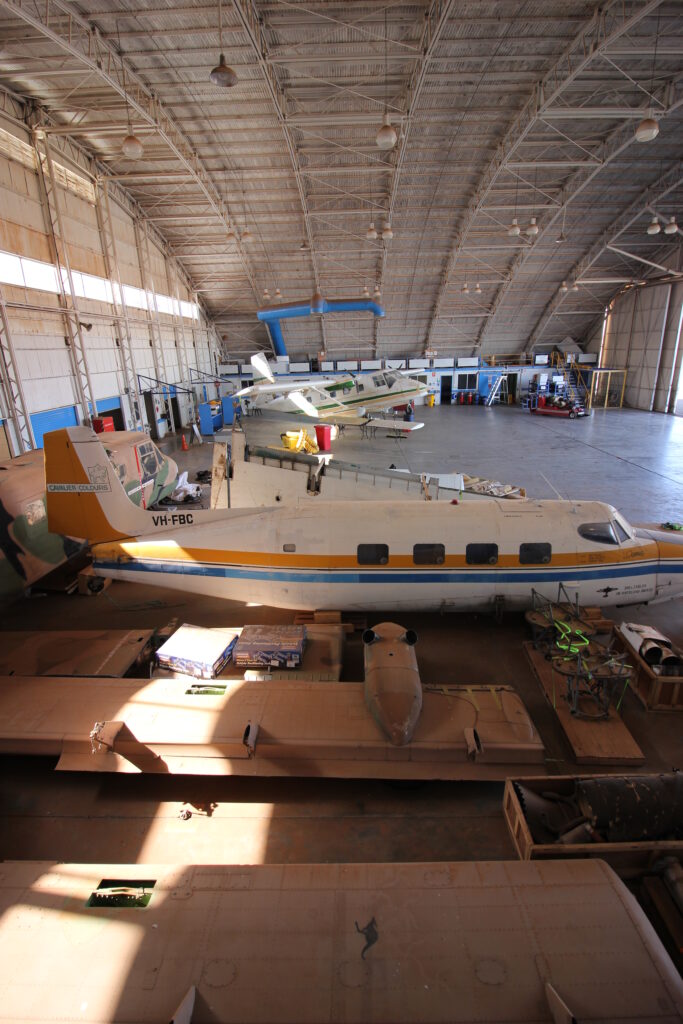
And there is a really nice museum attached, definitely worth visiting.
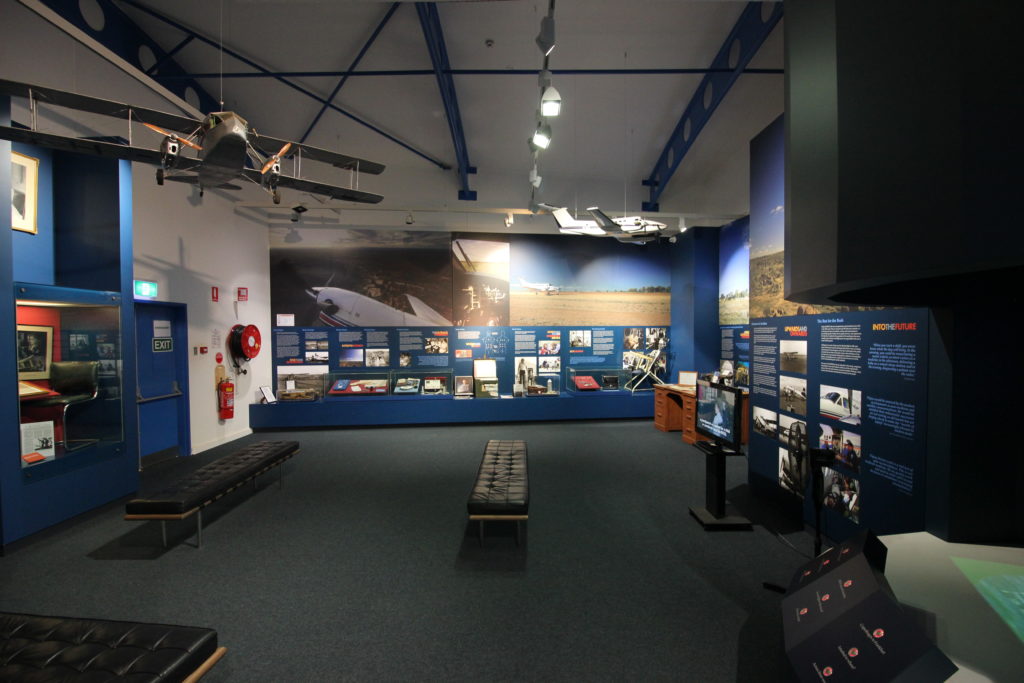
22.05.2019: Today I heard a plane flying overhead, a PC-12 from the Royal Flying Doctors Service at work.
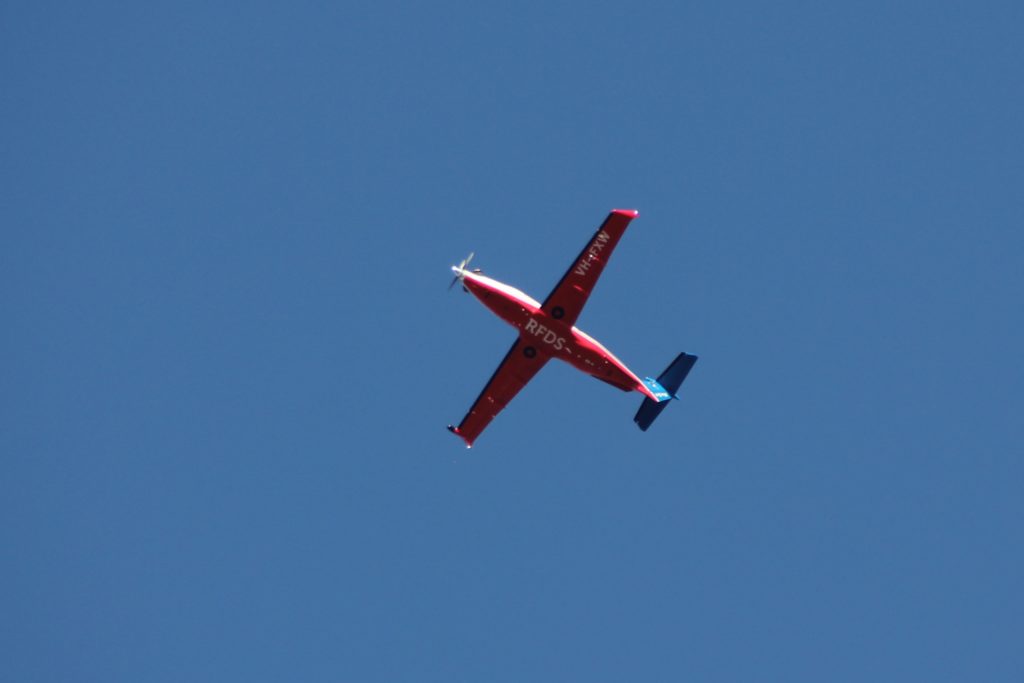
Just so that people don’t think I’m only interested in planes, here a kangaroo we saw this evening when visiting a desert plants botanical garden in Port Augusta. We see them every day, but they are usually quite shy an flee as soon as they see humans.
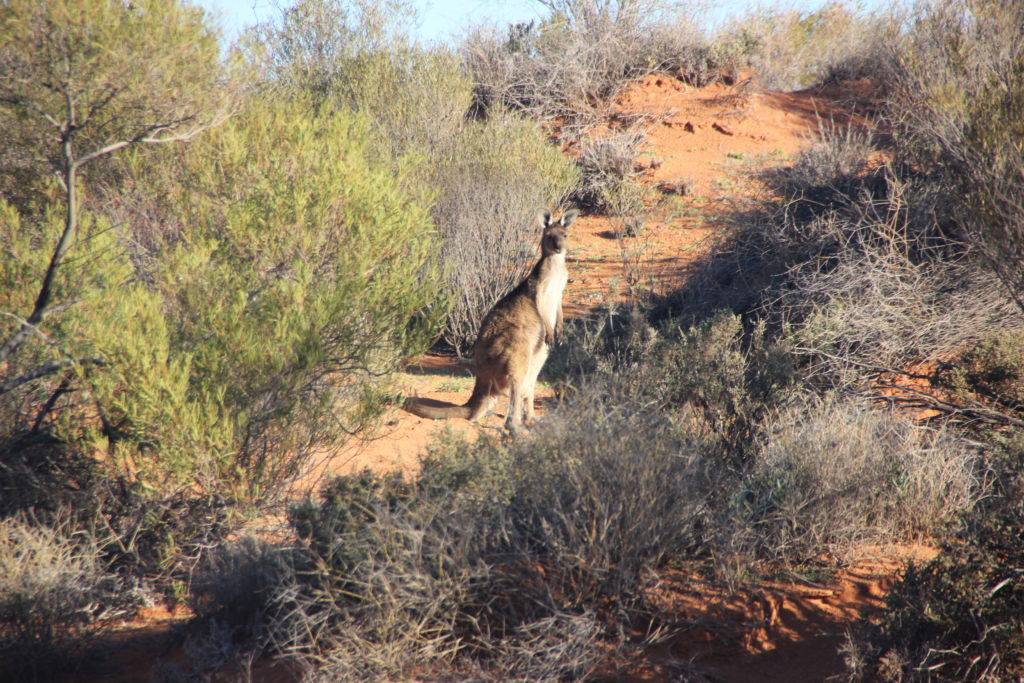
23.05.2019: We stopped ad the world’s largest rocket test range at Woomera today. It was opened in 1947, and is still in use. It is three times the size of Switzerland, and is used for both civilian and military rocket testing as well as weapons testing. In the sixties nine nuclear bombs were tested here by the UK.
Access to many parts of the range is restricted, but Woomera village is accessible to the general public.

At the centre of Woomera village lies a public park, called Rocket Park. where many of the rockets and aircraft which have been tested / used in the past are on display.
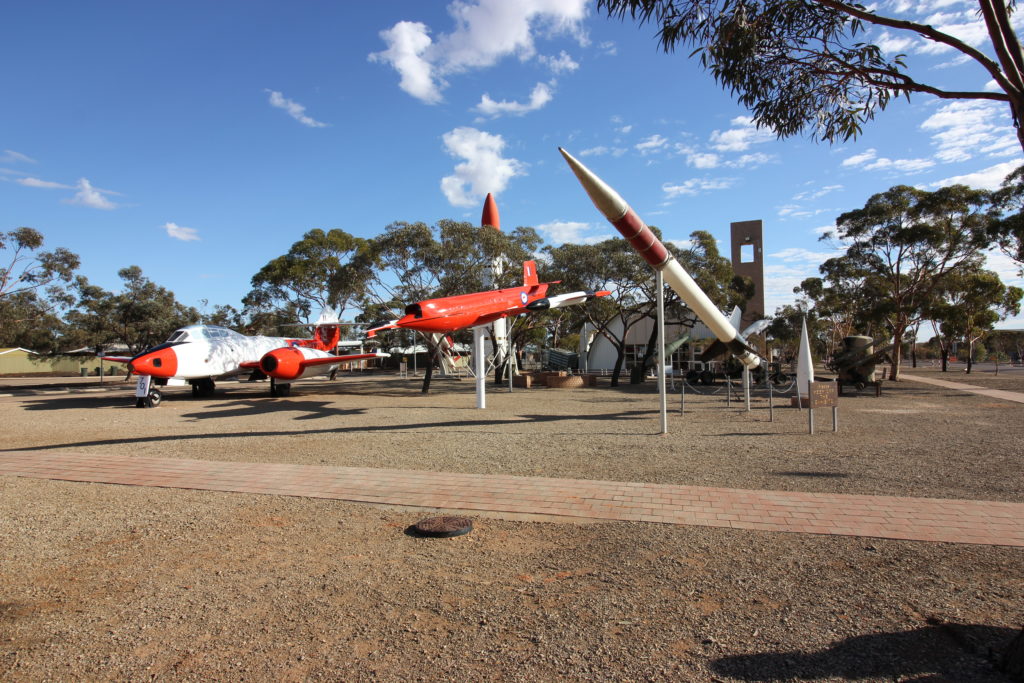
This includes a large Black Arrow rocket, also called Lipstick rocket, with which a satellite was sent into orbit from Woomera in 1971.
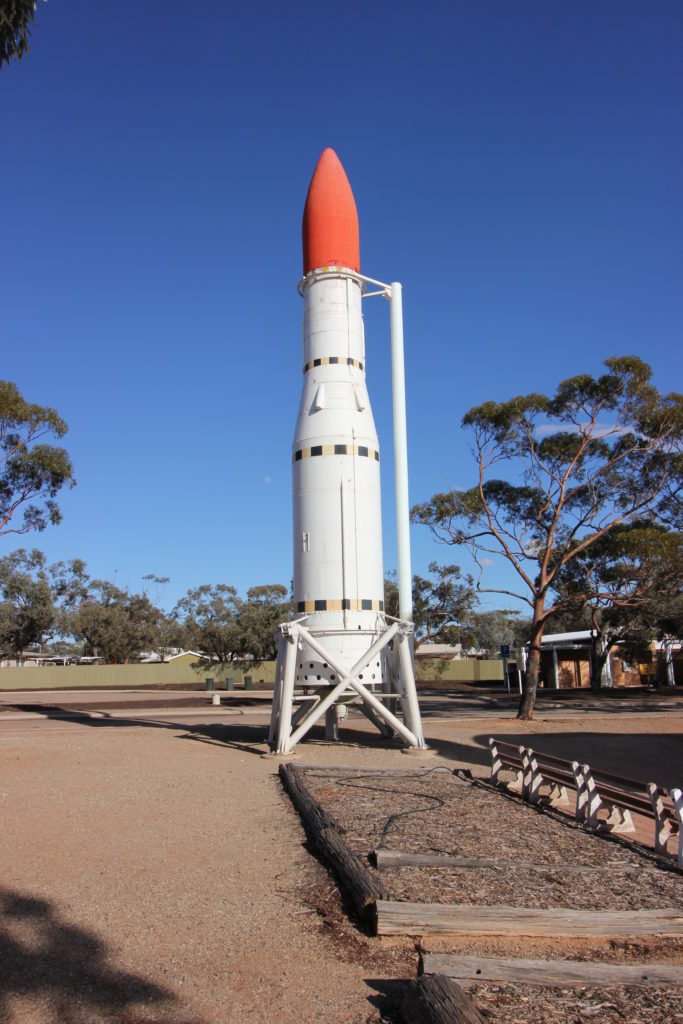
Below some debris collected a few years ago downrange from the launch site of a test which has obviously failed…

In the Woomera Heritage and Visitor Information Centre there is a very nice museum which documents the history of the range, and many of the project which took place here.
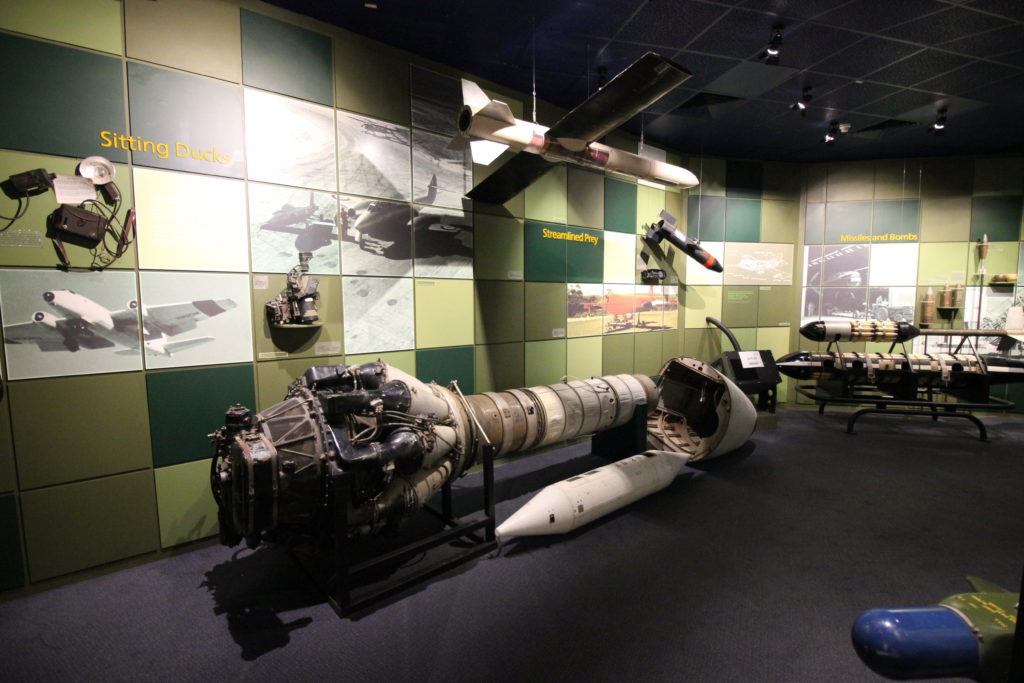
The picture below makes it quite clear why the location was selected for the range, there is nothing but shrubs and Kangaroos as far as one can see.
We then continue towards Coober Pedy, a short drive of only around 400 km… At one place I noticed unexpected, but familiar markings on the road. which I identifies as threshold marking of a runway. They are using sections of the Stuart Highway as emergency landing strips.

24.05.2019: We spent a day at Coober Pedy, the Opal capital of the world. Around the village one can see hundreds of rubble piles from the underground mines from a time when 3’000 miners were searching for Opals, but today there are only around 20 left.
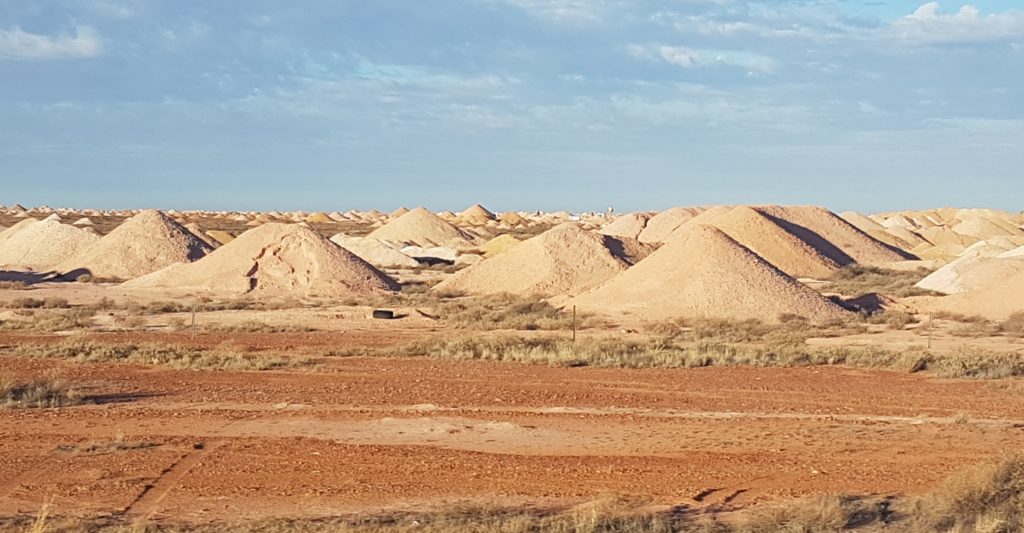
Somewhere in the village I noticed the tail of a Piper Cherokee sticking out of the ground, but that was only the left over of a movie set.

A bit further down the road one can even find a spaceship, it is also a leftover from a movie set. The film in which it was used is called Pitch Black, a science fiction horror movie, starring Vin Diesel…
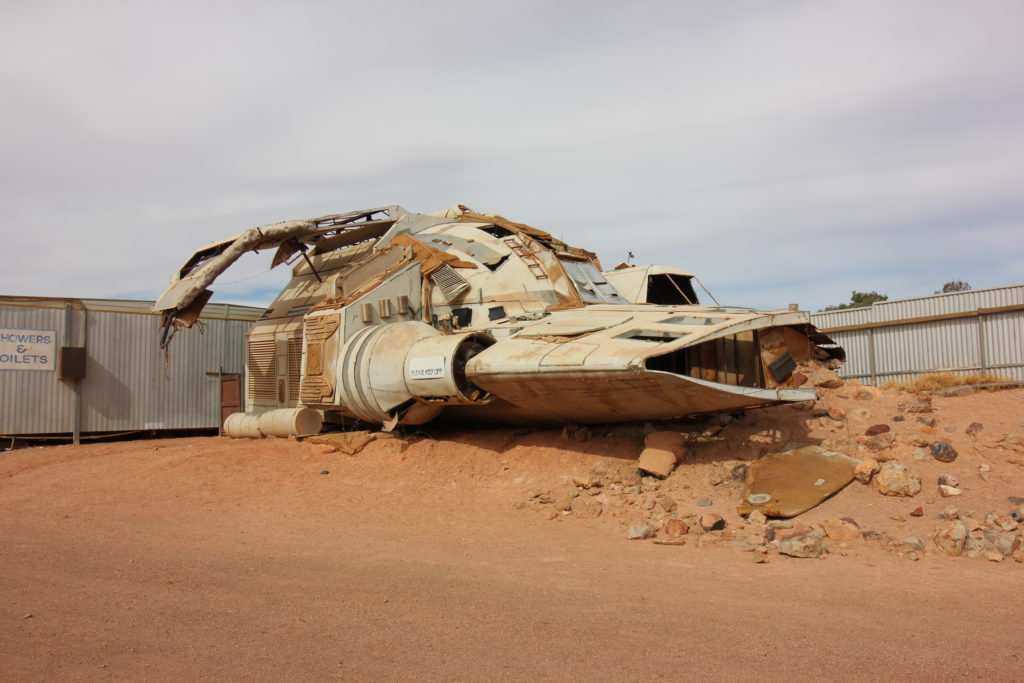
We did a little detour to see the Dingo fence, which passes east of Coober Pedy, but the road signs make it clear that you shouldn’t venture much further into the outback, unless you are properly equipped.

26.05.2019: Today we reached Uluru, and it is truly stunningly impressive. It lies in the Northern Territory, which is not a state of Australia, but a territory with limited self governance.

29.05.2019: We are in Alice Springs, the “city” in the heart of the red centre of Australia. Despite it’s small size of less than 30’000 inhabitants it plays an important role, as then next city is around 1’500 km away in each direction. It is a transport hub, as it lies on the trans-continental railway which was built from Port Augusta north to Alice Springs in 1929, but only extended to Darwin in 2004.
Alice Springs even has it’s own aviation museum, dedicated to Connellan Airways (later Connair) which operated here from 1939 to 1980.
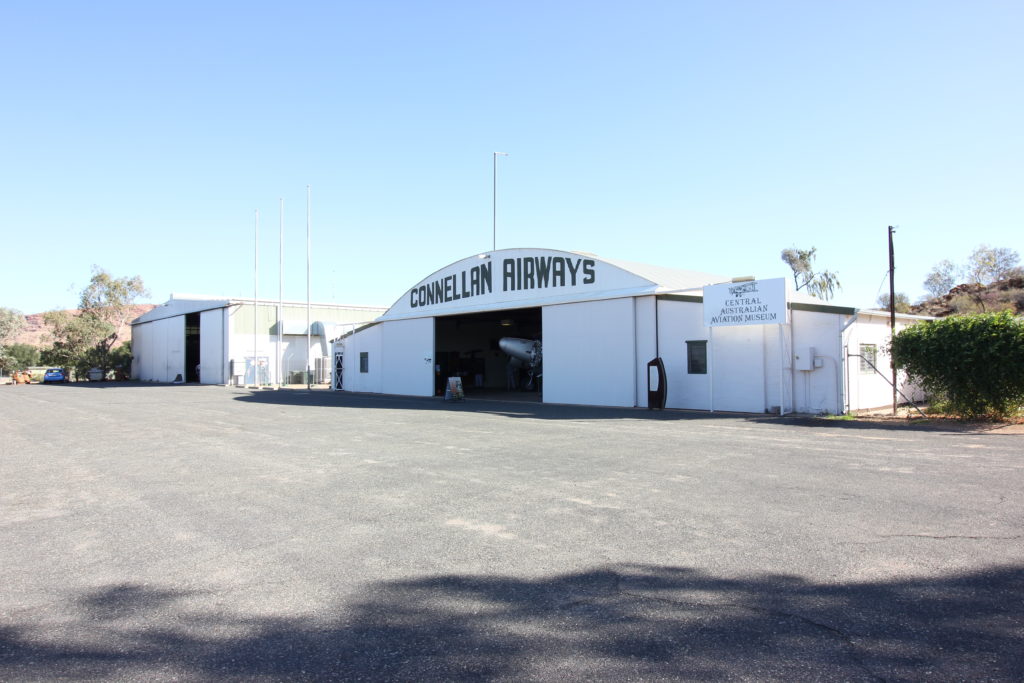
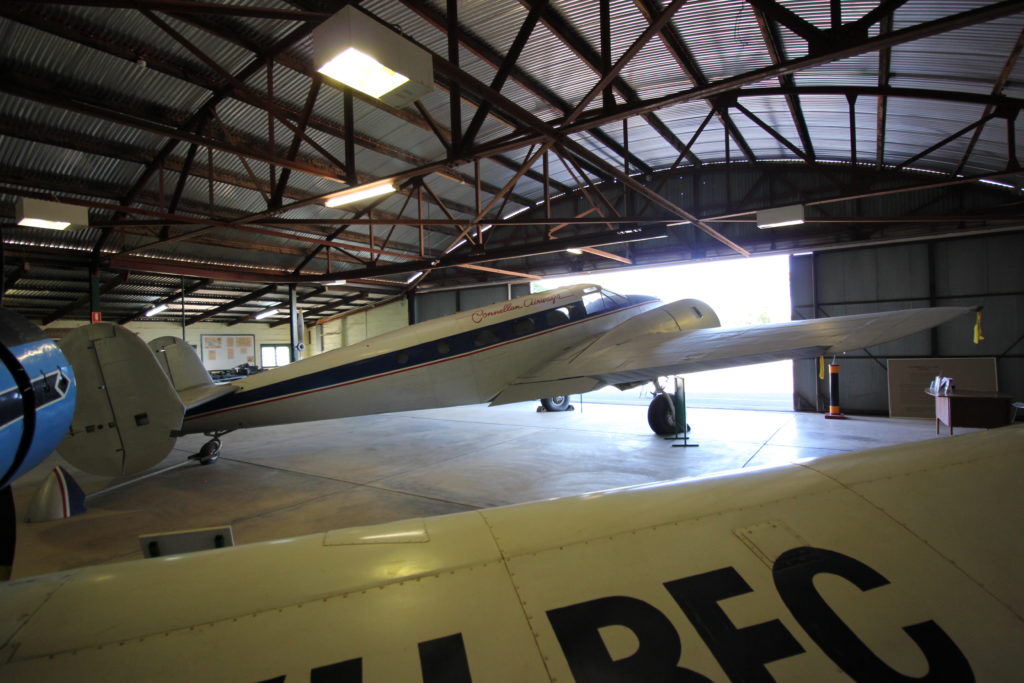
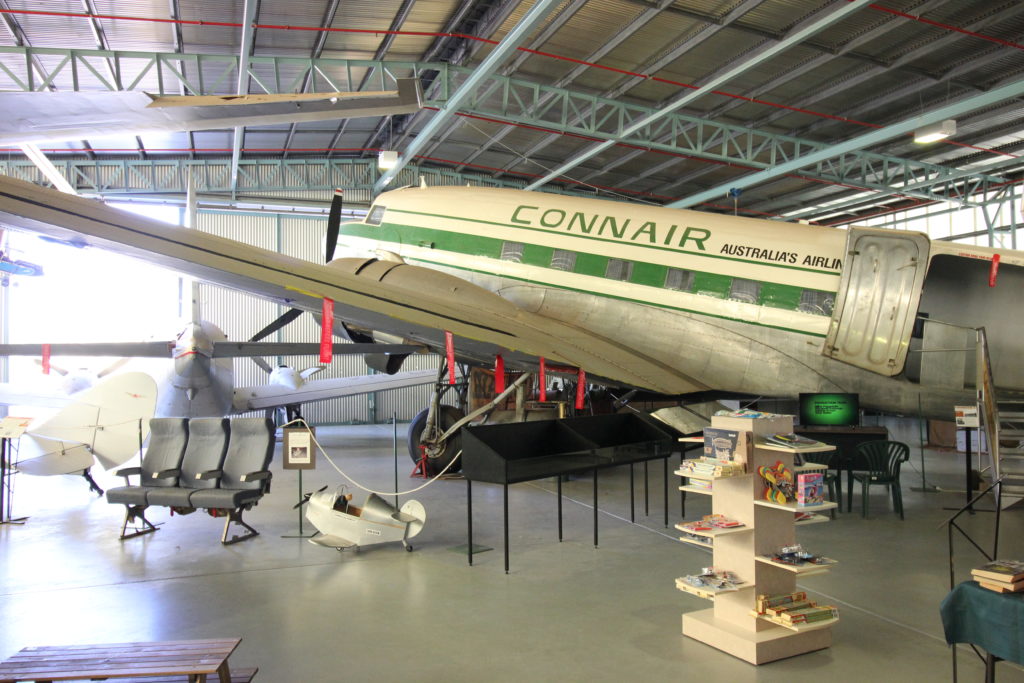
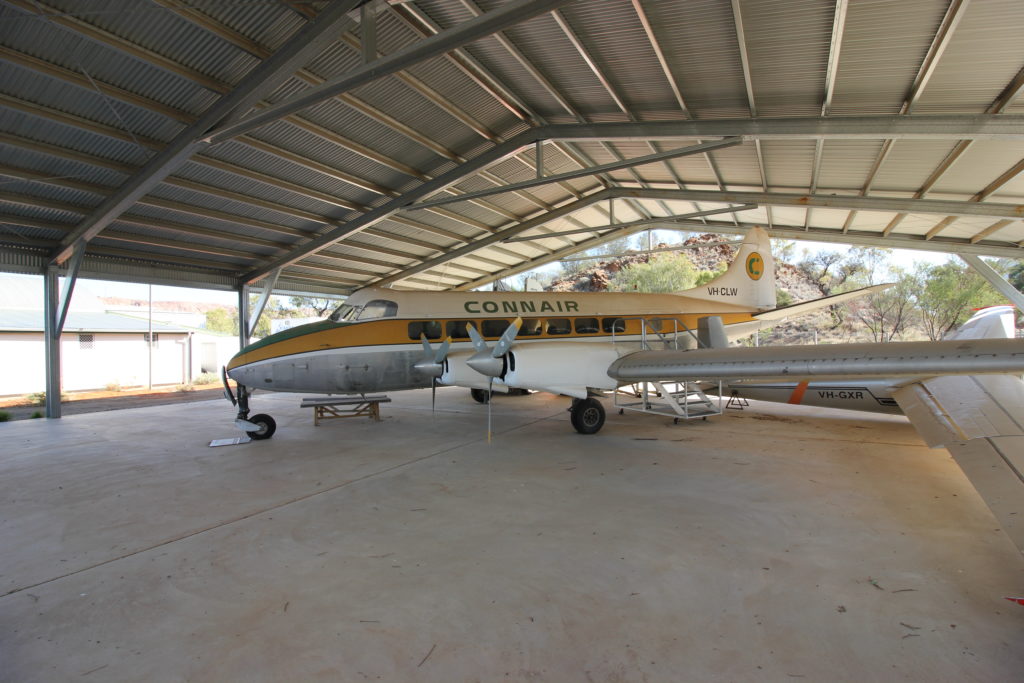
01.06.2019: Today we flew back from Alice Springs to Sydney, “only” a 2 hours 45 minutes flight… Below a view at the hangars of the Royal Flying Doctors Service, they are present everywhere in the outback.


Back in Sydney, a city easily identifiable by the harbour bridge and the opera house.
